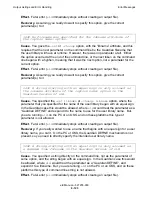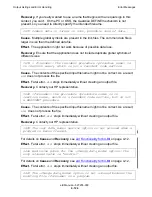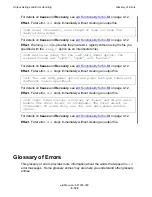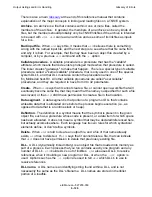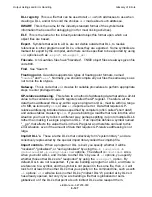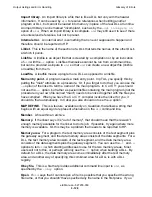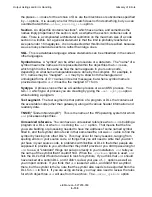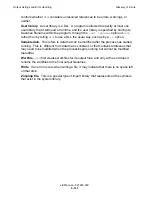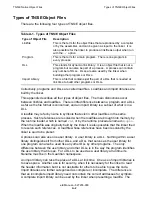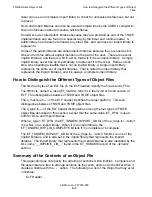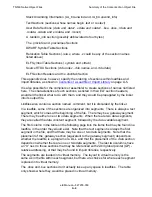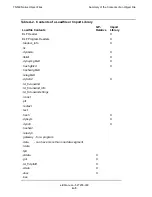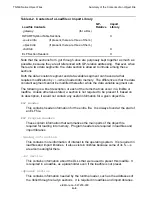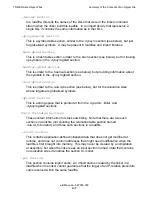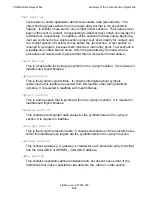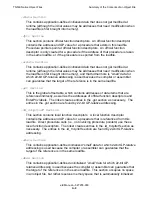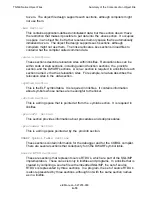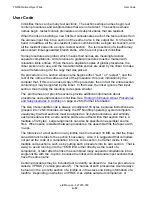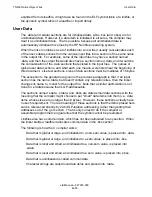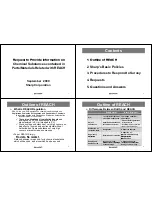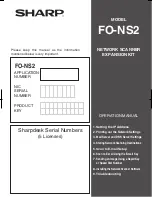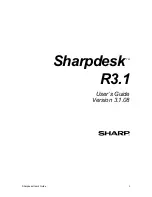
Output Listings and Error Handling
eld Manual—527255-009
6-130
Glossary of Errors
the places
eld
looks for the archive or DLL are the directories or subvolumes specified
by
-L
options. It is usually an error if the search does not find something, but you can
override that with the
-allow_missing_libs
option.
Section.
An object file contains "sections", which have names, and sometimes the
names imply properties of the section, such as whether the section contains code or
data. There is a complicated architectural restriction on the maximum size of a code
section in a linkfile, but a general statement is that the limit is probably reached at a
size just under 16 megabytes. It is not expected that this limit will be reached, because
we use many small code sections, rather than large ones.
SQL
. This is a database language whose statements can be embedded in the code of
other languages.
Symbol name.
A "symbol" can be either a procedure or a data item. The "name" of a
symbol means the name as it is represented within the object files that
eld
sees,
which might not be the same as how the name appears in your source code,
depending on what name manipulations were done by the compiler. For example, in
C++, names may be "mangled".
eld
may try to show both the mangled and
unmangled forms of C++ names in its error messages, but when a symbol name is
provided as input to
eld
it must be the mangled C++ form.
Systype.
A process runs either as a Guardian process or as an OSS process. You
tell
eld
which type of process you are creating by giving the
-set systype
option
while building a program.
Text segment.
The text segment is that portion of a program or DLL that contains all
the executable code (other than gateways) along with various header information and
readonly data.
TNS/E
("Tandem Non-Stop/E"). This is the name of the HP operating system for which
eld
processes object files.
Unresolved reference.
You can have an unresolved reference when
eld
is building a
program or a DLL, or when
eld
is doing the
-alf
option. That means that the file
you were building or processing needed to have the address of some named symbol
filled in, and that symbol did not exist in that same loadfile, nor was
eld
able to find the
symbol by looking into other DLL's. This may occur for many reasons, ranging from
spelling errors in your source code, or things that you still need to write that you don't
yet have in your source code, to problems with linkfiles or DLL's that other people are
supposed to provide to you, which either they didn't provide or you didn't pass along for
eld
to use, or "standard" things not set up correctly in your installation.
eld
tells you
the name of the symbol that it couldn't find. When the
-verbose
option is used,
eld
lists the DLL's that it found and used to look for symbols. If you think that
eld
should
have looked at a certain DLL, and it didn't, review your use of
-l
options as well as
your import controls. If you think that
eld
looked at a DLL, and didn't find a symbol
there, but the symbol is there, note that the symbol also needs to be exported from the
DLL for
eld
to find it. If you are using archives, you may also need to review the rules
for which object files
eld
will use from the archive. The
-unres_symbols
option
Содержание eld
Страница 4: ......
Страница 8: ...Contents eld Manual 527255 009 iv ...
Страница 12: ...What s New in This Manual eld Manual 527255 009 viii Changes to the 527255 005 Manual ...
Страница 34: ...Introduction to eld eld Manual 527255 009 1 14 Example of Use ...
Страница 54: ...eld Input and Output eld Manual 527255 009 2 20 Using Archives ...
Страница 98: ...Other eld Processing eld Manual 527255 009 4 20 Merging Source RTDUs ...
Страница 242: ...Output Listings and Error Handling eld Manual 527255 009 6 132 Glossary of Errors ...








